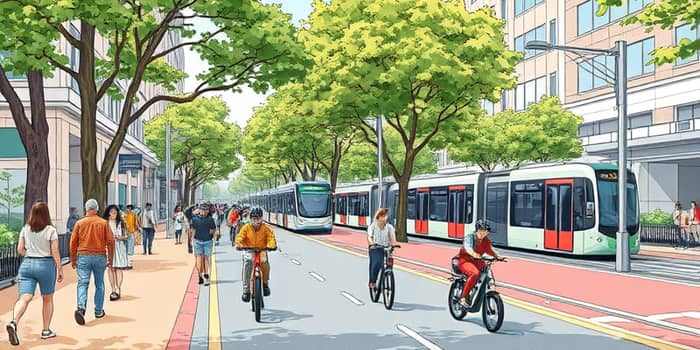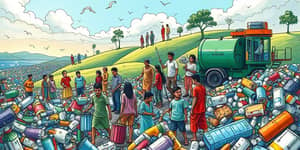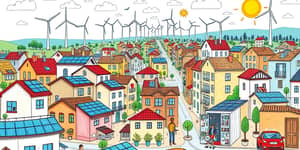As our cities grow and climate concerns mount, choosing how we move around town has never been more important. Local travel decisions impact air quality, traffic congestion, public health, and our collective carbon footprint. By examining data, success stories, and practical strategies, we can all find ways to shift toward cleaner, healthier modes of transportation.
From the simple act of walking to adopting high-tech electric vehicles, each choice carries unique benefits and challenges. In this article, we explore the spectrum of local travel options, measure their environmental impact, and offer tangible tips to help you make greener decisions every day.
Understanding Green Transportation
The "greenest" mode of travel is measured by energy use, pollution output, and co-benefits such as improved health and reduced congestion. At one end are personal gasoline cars, which produce the most emissions. At the other end lie walking and cycling, offering zero direct greenhouse gas emissions and immediate health gains.
Between these extremes are a variety of public and shared options—electric trains, buses, e-bikes, and carpooling—all of which can dramatically lower emissions when widely adopted.
Ranking Modes by Emissions and Benefits
- Walking: zero direct greenhouse gas emissions, best for very short trips
- Cycling: minimal emissions, health benefits through increased physical activity
- E-bike and e-scooter: efficient for short, urban trips, very low per-mile impact
- Electric train: high-capacity electrified passenger trains, emits 66–75% less than cars
- Public bus: scalable benefits as ridership grows, propane or electric models cut emissions by up to 60%
- Carpooling and rideshare: community-building via shared mobility, savings increase with each extra passenger
- Electric car: low emissions when charged from renewables, good for longer trips
- Single-occupancy gasoline car: highest carbon output, best avoided whenever possible
Comparing Emissions: A Clear View
Data shows that taking the train instead of driving can cut individual emissions by up to 80% on medium-length commutes. Public transit users typically lower their carbon footprint by 45% compared to solo car drivers.
Even a half-full bus outperforms two cars carrying one passenger each. As occupancy rises, emissions per passenger mile drop sharply, making shared modes like buses and carpools powerful tools for climate action.
Infrastructure and Policy: The Backbone of Change
Investing in safe bike lanes and pedestrian zones drives up cycling rates, as seen in Copenhagen where 49% of commutes are by bike. That city achieved a 30% transport emissions drop since 1995 thanks to dedicated lanes, bike-friendly traffic signals, and public awareness campaigns.
Similarly, expanding electrified rail networks and converting bus fleets to propane or electric models require upfront investment but yield long-term dividends in cleaner air and lower greenhouse gases. Minimal infrastructure investment required by comparison, cycling networks can transform urban mobility at a fraction of the cost of new highways.
Behavior and Community Impact
Culture and habit play critical roles. Encouraging ride-sharing or bus use relies not only on availability but also on public perception and convenience. Employers can offer transit subsidies or bike-to-work incentives, while cities can host open streets events to demonstrate the joy of car-free days.
- Car-free festivals: showcase reduce urban air pollution in real time
- Employer transit benefits: shift habits toward buses and trains
- Cycling education programs: build confidence for new riders
Practical Tips for Greener Travel
Start small. Swap a single weekly car journey for a bike ride or train trip. Track emissions savings with a smartphone app or simple mileage log. Join a local carpool group or test an e-scooter for short hops to the grocery store.
If you own a car, consider transitioning to an electric model, especially if you can charge at home with solar or other renewable energy. And on days when weather makes active travel difficult, public transit or rideshare in a high-occupancy vehicle remains greener than driving solo.
Embracing the Future of Local Mobility
Emerging technologies—hydrogen buses, smart traffic management, shared micro-mobility fleets—are set to make urban travel even cleaner. Yet infrastructure and policy will remain the catalysts that turn potential into reality. Cities that plan holistically, prioritizing pedestrians, cyclists, and electrified public transit, will see the greatest gains in quality of life.
By combining data-driven insight with community engagement, each of us can play a part. Simple choices—walking or cycling for short errands, choosing the train for your commute, sharing a ride—add up to significant household emissions reductions and healthier, more vibrant neighborhoods.
References
- https://www.modeshift.com/what-is-the-most-sustainable-type-of-transportation/
- https://source.colostate.edu/sustainable-transportation/
- https://rolleatusa.com/eco-friendly-transportation/
- https://keepnhmoving.com/green-transportation-options/
- https://www.bata.net/how-to-ride/green-public-transportation.html
- https://www.irs.gov/publications/p225
- https://sustainabilitymag.com/top10/top-10-green-transport-solutions
- https://www.cvent.com/en/blog/hospitality/eco-friendly-hotel-ideas










